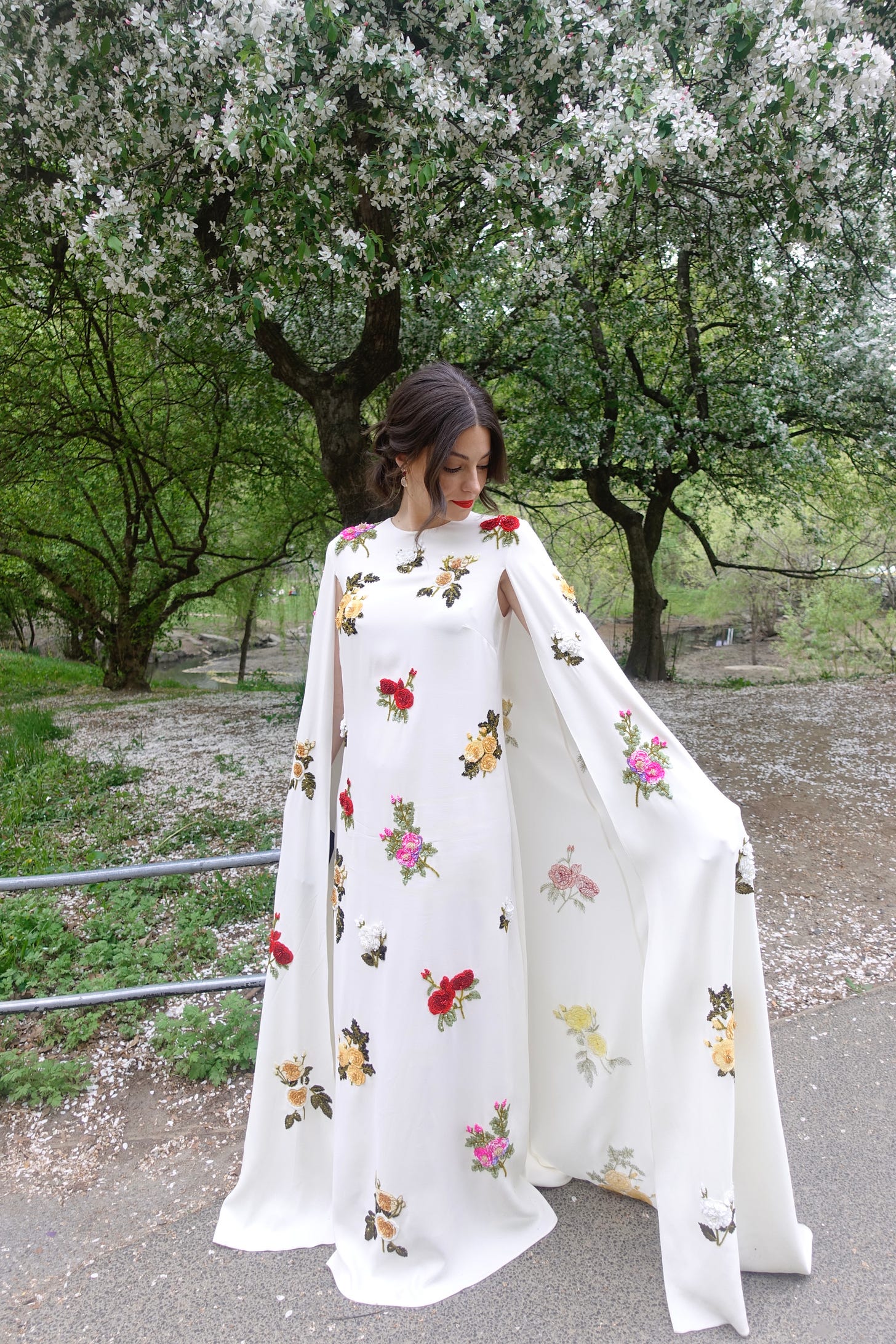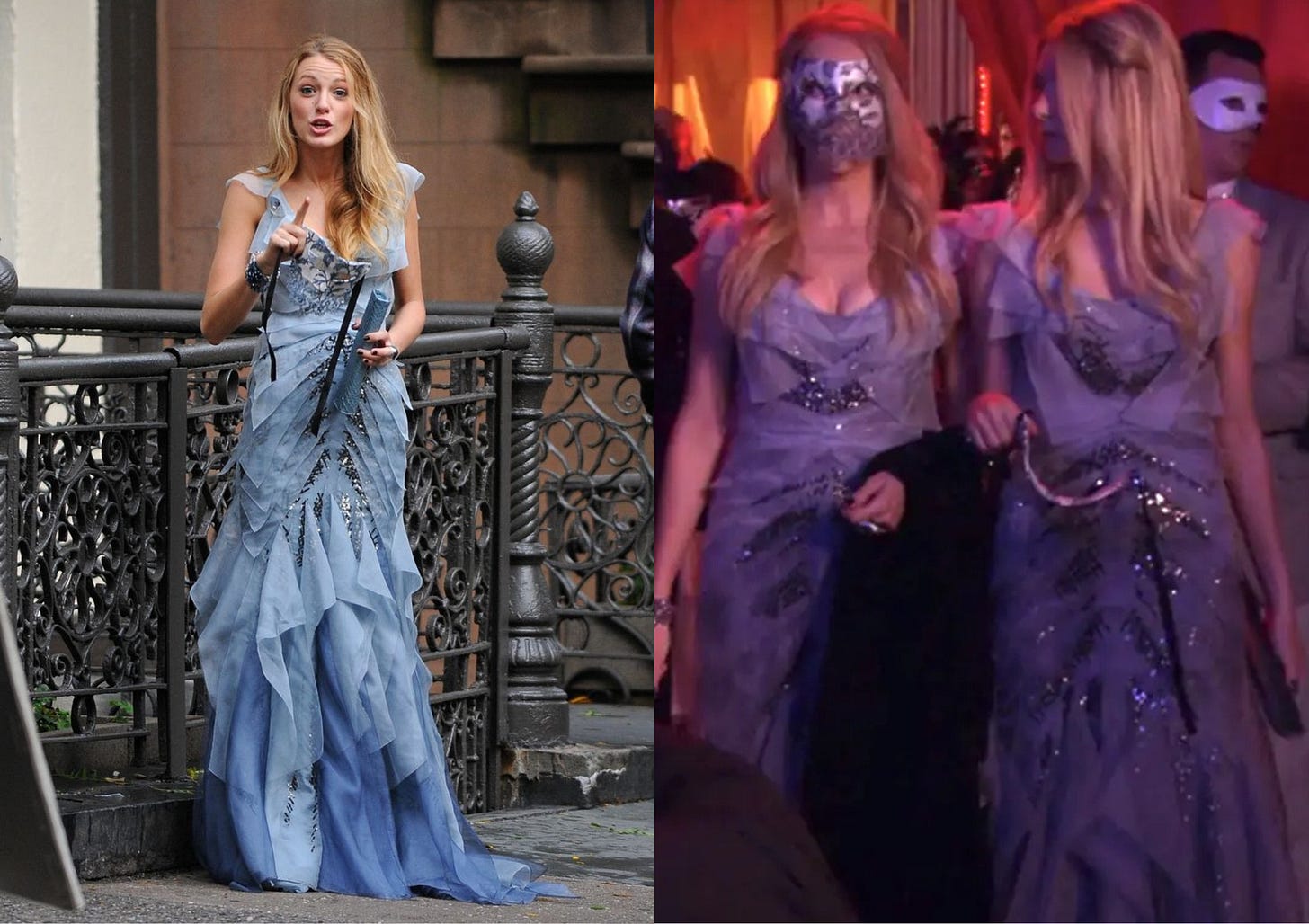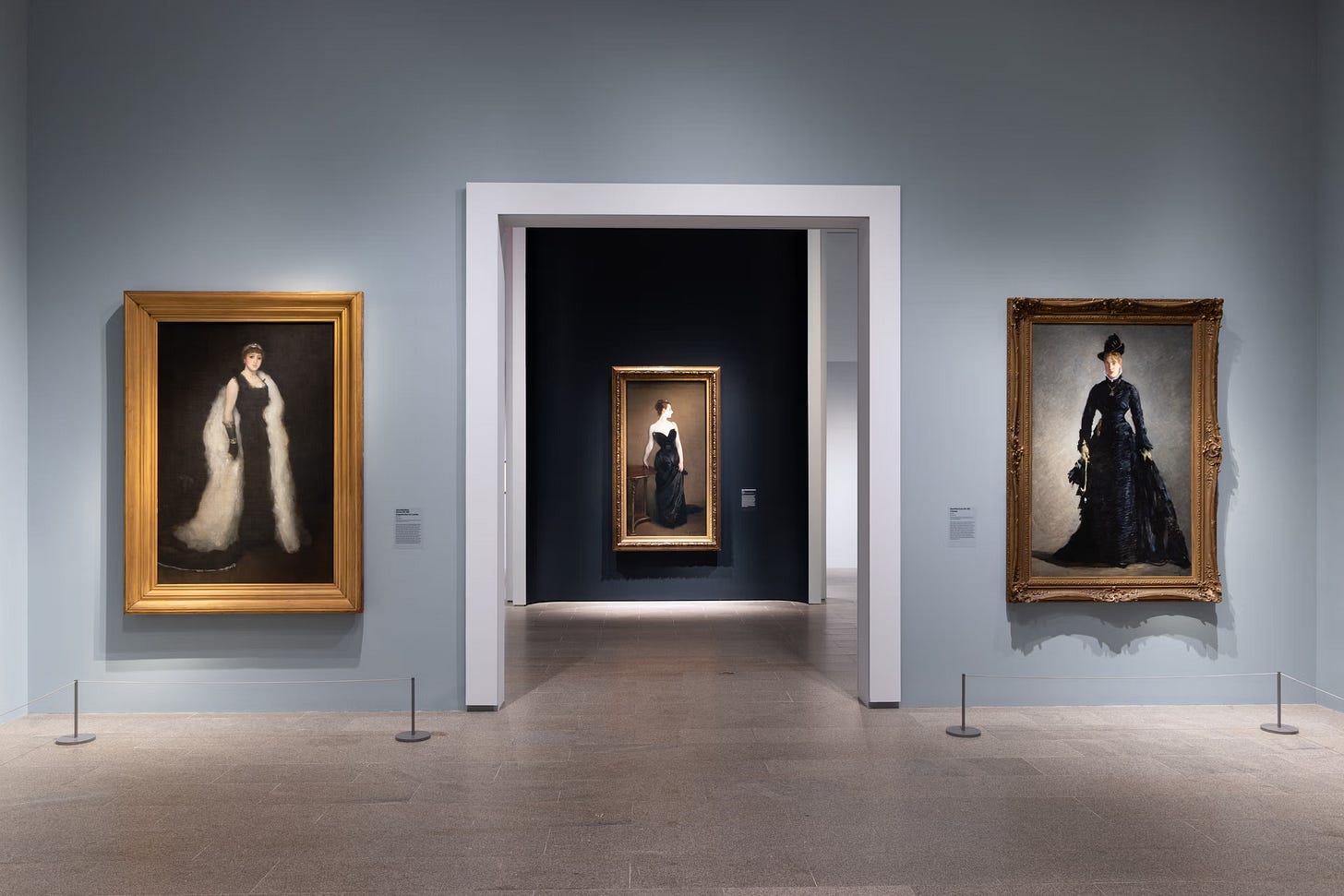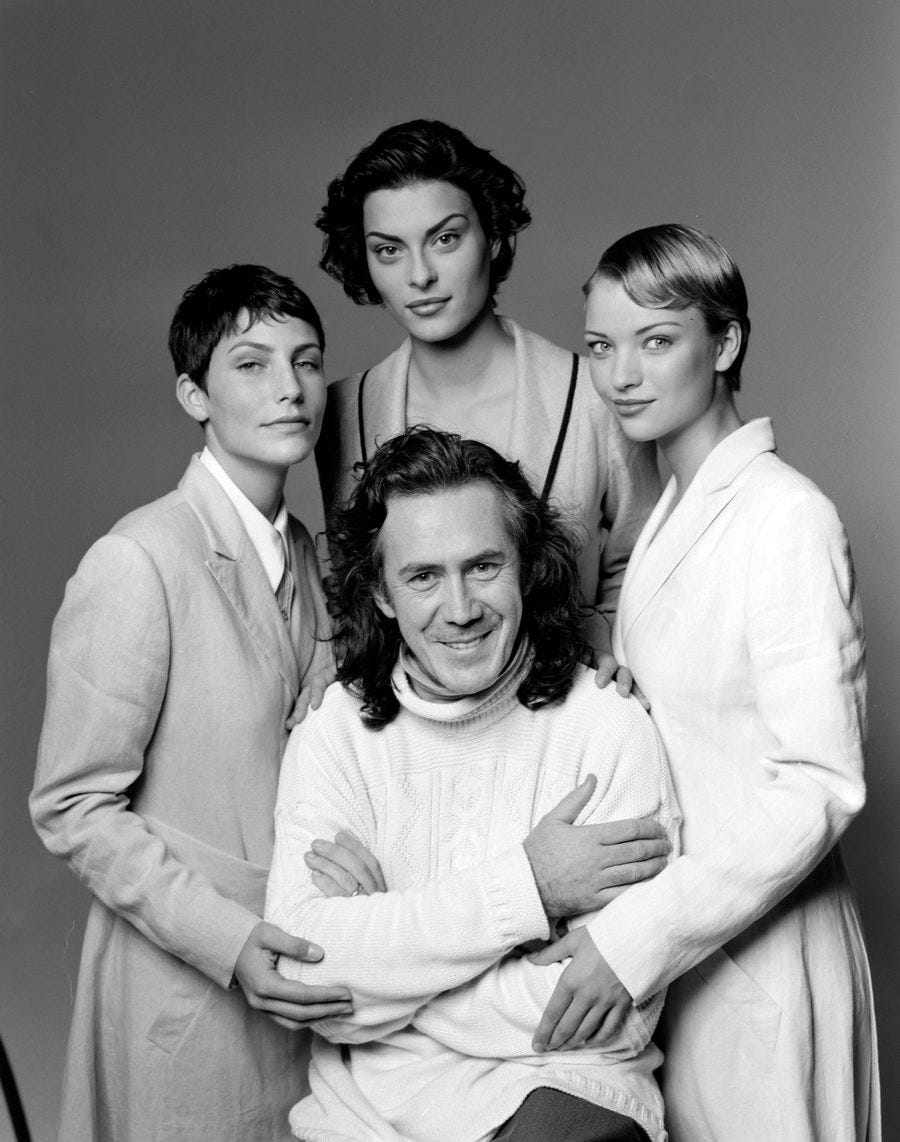The Best ’90s Designer You Forgot, Per Lilah
Plus, more vintage shopping and culture recommendations for the week.
This week’s recommendations: Spring gala season is in full swing, and there’s no better time for me to pull some great vintage gowns. Between Lauren Santo Domingo’s icy Prabal Gurung at Tiffany’s Blue Book gala and the sea of Oscar de la Renta at Friday’s Save Venice (see me above!), New York has been a carousel of ball gowns. And with the Prince’s Trust Gala and the Met Gala still ahead, the season’s just getting started. Beyond fashion: Amazon’s Étoile brings real-life ballerinas to the screen, and The Met’s Sargent and Paris exhibition captures a young artist learning to dazzle.


Bill Blass Bows
Nothing captures the exuberance of 1980s American glamour quite like a Bill Blass party dress—you should already know this because I’ve waxed poetic on Blass in previous sends!
This one, with its oversized bow in electric pink and lipstick red, is a star among stars. So iconic was this design that it was chosen to represent the entire decade on W magazine’s August 2002 cover (modeled by Shalom Harlow) as part of its special 30th anniversary celebration of fashion.
And because The RealReal never ceases to surprise, I found another version of the same dress—this time in a black and red colorway, a slightly moodier take on its candy-bright sibling. Either way, it’s a piece that practically demands its own grand entrance.
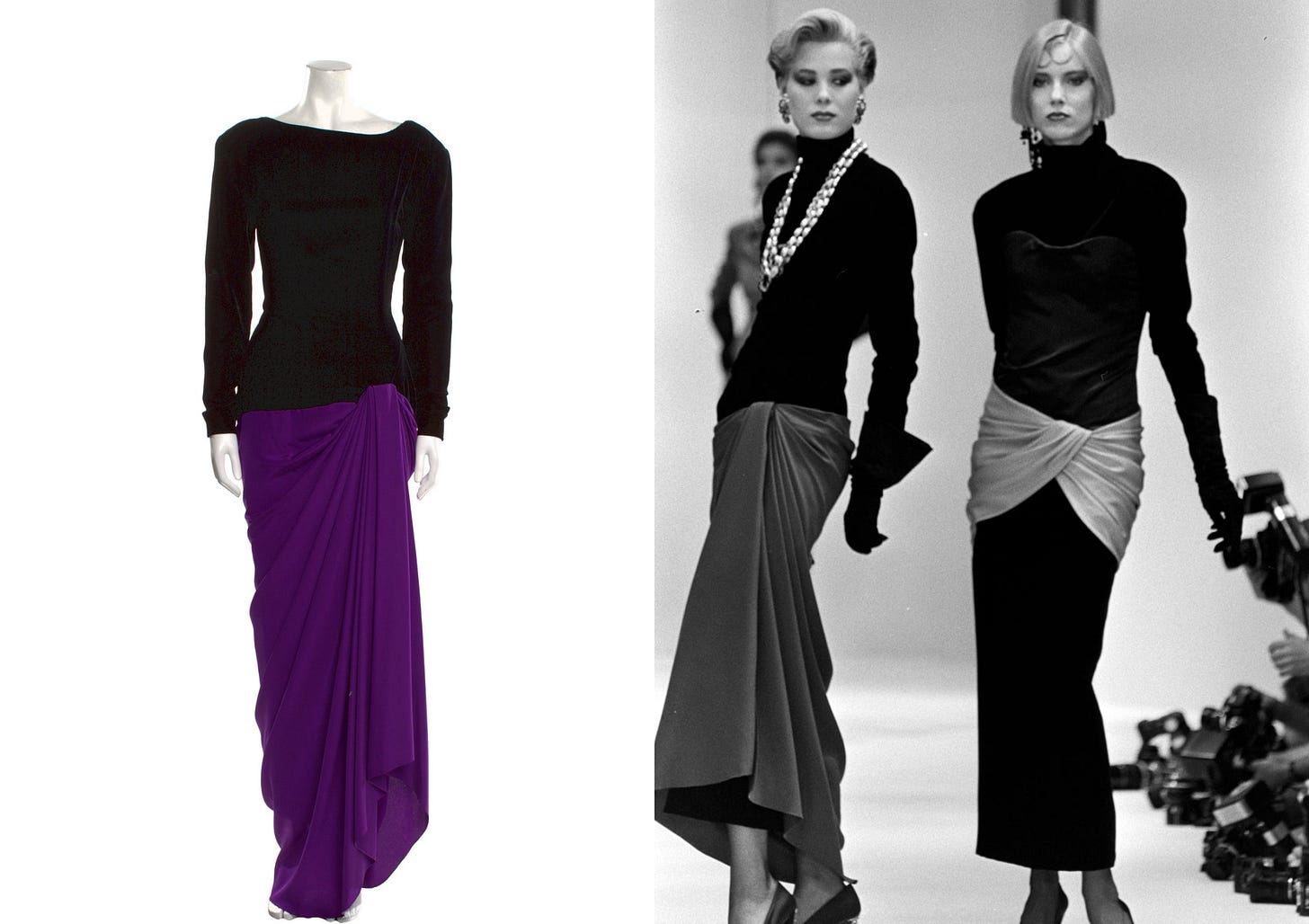
A Bohan Beauty
Under the steady, elegant hand of Marc Bohan—who helmed Dior for nearly three decades—the house cultivated a vision of refined, timeless glamour. This evening gown, a striking interplay of black and purple silk from the Fall 1985 Haute Couture collection, embodies Bohan’s signature restraint and grace. With its sleek long sleeves, sculptural bateau neckline, the velvet dress is all about clean lines and quiet drama. On the runway, the model brought its sculptural qualities vividly to life, the rich, structured fabric moving with a subtle, statuesque grace. It’s a gown that whispers power rather than shouts—exactly the kind of elegance Bohan perfected.

Ghesquière For Balenciaga & Prada
It doesn’t get much better than this—Nicolas Ghesquière’s 2009 Balenciaga silk gown is a masterclass in modern elegance. The bodice, a softly ruched ivory silk, melts into a sleek black skirt, creating a sharp, sculptural silhouette that feels both timeless and unmistakably of its moment. The price? Practically a steal for a dress of this caliber.
Alongside it, a black empire-waist gown by Prada offers a darker, romantic counterpoint. With its delicate lace panels and intricate beaded detailing, it feels like a 2000s reinterpretation of Regency-era mourning wear—somber, yes, but also deeply sensual in the way only Prada can manage.
Le Gigot Glory
No era embraced drama quite like the 1980s—and no silhouette embodied it better than the le gigot sleeve. First, a white stunner from Victor Costa, the Texas-born "king of affordable glamour," who made party dresses that channeled the best of Parisian couture for the everyday American woman. His design is pure confection: voluminous sleeves, a nipped waist, and enough presence to command any room.
Next, a gorgeous floral dress from Leonard, the French house best known for its painterly prints and mastery of silk jersey. (Founded by Jacques Leonard and Daniel Tribouillard in the 1950s, Leonard became famous for creating a process to print on delicate fabrics without breaking the fibers.) This teal and purple beauty—with its bold blooms and puffed sleeves—feels just as fresh today as it did then, a rare ‘80s piece that has only grown better with time.
Galanos, Vintage
Every so often, a dress comes along that feels like a whispered homage to fashion history. This black evening gown by Galanos—with its sheer Swiss dot overlay, delicate scoop neckline, and cloud of long sleeves—recalls one of my all-time favorites: Dior’s legendary L'Éléphant Blanc gown from 1958, now housed at The Met. (If you know, you know—but if not, I’ll kindly share the link so you can feast your eyes.) Here, Galanos offers a slick, modern take—stripping away the ivory romance for something darker, sharper, impossibly elegant. With its polka-dotted mesh and concealed zip at the back, it’s a piece you could slip into today and feel like you owned the room. Trust me—you really do need this one.
Richard Tyler Treasures
It’s almost tragic that there’s an entire generation obsessed with 1990s fashion that barely knows Richard Tyler’s name. (For that reason, he’s this week’s You Really Should Know This). While you’re setting eBay alerts for Galliano and Dior, you should be setting them for Richard Tyler too—because no one cut a dress in that decade quite like he did. A master of serious, almost architectural craftsmanship, Tyler brought a quiet kind of glamour to Los Angeles at a time when the city was falling behind, fashion-wise.
The two pieces I’ve pulled this week are both red silk stunners—dresses you won’t fully appreciate until they’re actually on your body. One features a bubble hem (yes, it’s coming back), a little playful but still sharply controlled. The other is pure fire engine red simplicity—an exercise in restraint and precision that feels even sharper today.

XOXO Gossip Gown
This blue chiffon gown from Carolina Herrera’s Fall 2010 collection—with its pleated bodice and beadwork that hints at butterfly wings—played a key role on Gossip Girl.
In Season 4, Episode 9—"The Witches of Bushwick"—Serena van der Woodsen wears it to a Brooklyn masquerade ball, only to have her rivals copy the look as part of a larger scheme. Shockingly, the dress is now nearly 15 years old but looks as sharp and modern today as it did on screen.
More Vintage Things—No Context Needed


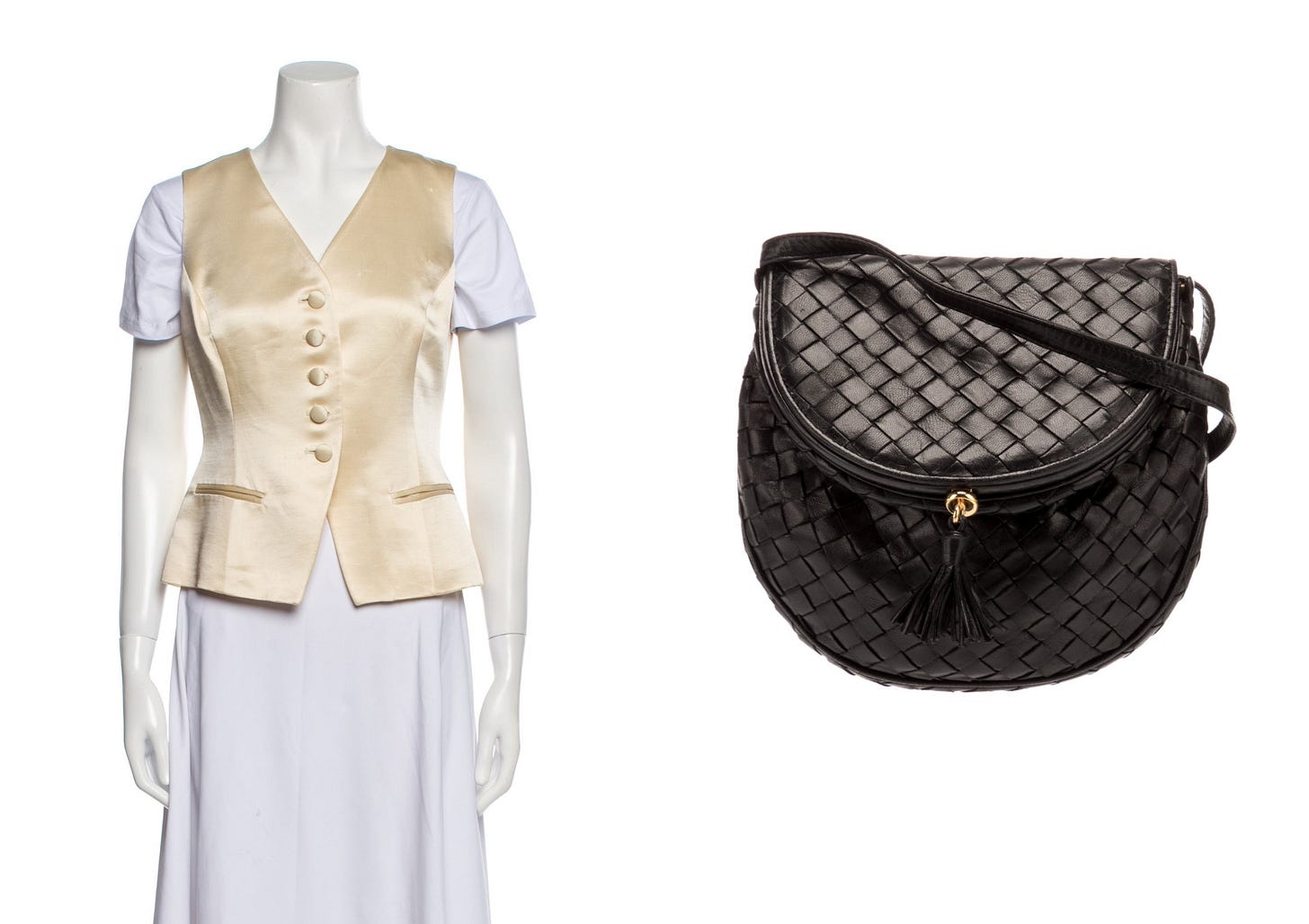

A New Ballet Obsession
If you’re even slightly ballet-obsessed (or just costume-obsessed), Amazon Prime’s new series Étoile is required viewing. Set inside an elite European ballet company, the show follows dancers navigating ambition, heartbreak, and creative pressure—all against a backdrop of grand opera houses, grueling rehearsals, and whispered scandals.
(Étoile, by the way, is French for "star"—the highest rank a dancer can achieve at the Paris Opera Ballet.)
The series features a rare blend of dramatic heavyweights and real ballet royalty. Actors like Charlotte Gainsbourg (as the imperious director of the French company), Luke Kirby, Lou de Laâge, and Gideon Glick lead the narrative, while real-life dance stars—including New York City Ballet principal Tiler Peck, American Ballet Theatre principal Skylar Brandt, and Paris Opera Ballet étoile Sae Eun Park—bring breathtaking authenticity to the performances.
Portraits of a Lady
Before John Singer Sargent became the ultimate society portraitist, he was just another young artist getting his education—and his attitude—in Paris.
The Met’s new exhibition, Sargent and Paris (through August 3rd), traces how the city’s glamour, ambition, and avant-garde spirit shaped his early career.
You’ll find shimmering studies of light, provocative portraits that once scandalized polite society, and the unmistakable moment when Sargent stopped imitating and started rewriting the rules.
If Paris was the making of Sargent, this show is proof—and the perfect excuse to spend an afternoon at the museum while Park Avenue bursts into bloom.
The Tailor Who Brought Couture to L.A.
There’s a certain kind of 1990s glamour that gets recycled endlessly—Galliano, Tom Ford, the usual suspects—but somehow Richard Tyler’s name too often gets left out. It shouldn’t be.
Born in Sunshine, Australia (yes, really), Tyler learned to sew at age five, helping his mother make ballerina costumes and priestly vestments. He eventually left school to apprentice full-time, mastering the old-school techniques that would later set him apart.
When Tyler arrived in Los Angeles in the late 1970s, he started designing menswear: razor-sharp jackets and tailored pieces that blended Savile Row precision with a rock-and-roll swagger. (Think: Ossie Clark meets Jimmy Page, with an Australian work ethic.) It wasn’t long before women started clamoring for his clothes too—leading him into eveningwear that combined the strictness of a great suit with the softness of bias-cut silks and hand-finished detailing.
Tyler built his reputation not on flash, but on craftsmanship. When he and his wife Lisa Trafficante first started selling in New York, tailors reportedly refused to work on his pieces because they "hadn't seen that kind of construction and that much handwork since the 1930s."
Hand-finished buttonholes, meticulously sewn linings, and tiny sawtooth silk welts were all part of the package. His clothes weren’t just beautiful—they were engineered. If you stumble across one of his dresses today—and you really should be looking—know you’re finding a piece of true artistry, not trend-chasing.
In short: If you're setting eBay alerts for Galliano, you should be setting them for Richard Tyler too.




